dSONIQ’s Realphones 2.0 offers a realistic and affordable one-stop solution to headphone mixing
With a host of new virtual playback systems, listening environments and a simple mode, does Realphones 2.0 still sit at the bleeding-edge of headphone mixing?
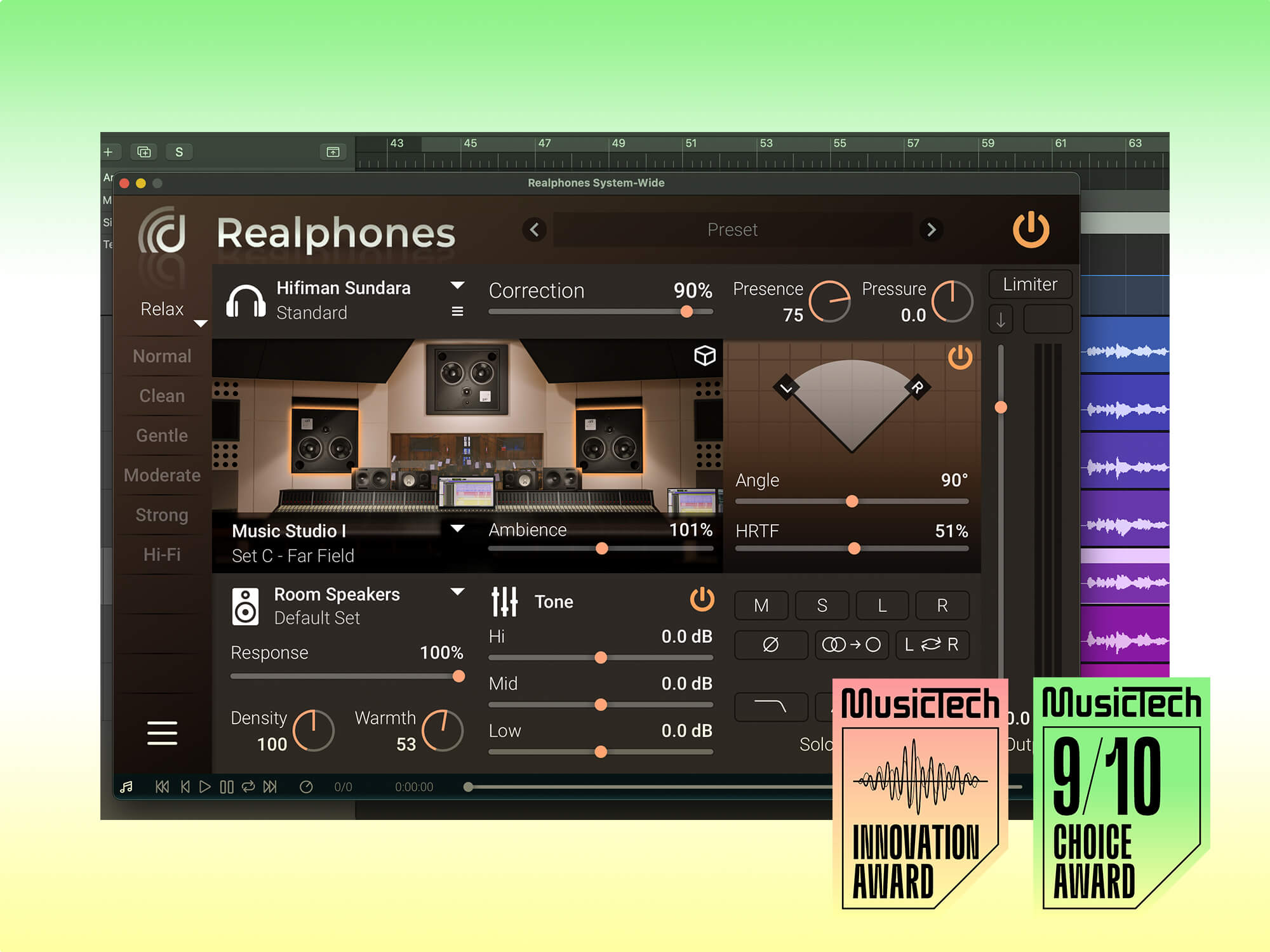
dSONIQ Realphones 2.0
Review Overview
Our rating
9
Our verdict
⊕ Sounds far more realistic than competitors we’ve tested
⊕ System-wide functionality is great for workflow integration
⊕ Handy MIDI control
⊖ Limited calibration profiles and it’s unnecessarily fiddly to have to register specific headphone models
⊖ Some parts of the user interface are confusing
Standard £85/Professional £131/Ultimate £191
Upgrade/loyalty deals for existing users
Education discounts available
dsoniq.com
Realphones 2.0 is a suite and plugin that aims to put headphone mixing engineers at an equal footing with owners of lavish, acoustically-treated rooms adorned with expensive monitors.
The idea is that with any half-decent pair of headphones, you can get an accurate impression of how your mix will sound on a multitude of playback speakers and rooms. Version 2.0 comes with many new playback systems and rooms to choose from, a new sound engine and MIDI control.
Frequently with this type of system, there are features missing — for example, you can do headphone EQ correction and listen virtually to a few sets of speakers, but crosstalk and room ambience are forgotten. Other plugins have all the essential parts but don’t work system-wide or their ambience simulation sounds artificial.
Realphones overcomes all these hurdles and had already gained fans prior to this new release. System-wide capability is a big deal in particular . Competing systems that only work as a plugin have to be hosted at the end of the mastering chain or a dedicated control room mix (if available), and with the former you also need to turn the processing off before bouncing. There are more elegant solutions that host plugins in the system audio stream, such as Rogue Amoeba’s SoundSource, but it’s a hassle.
Despite the plusses, there are irritations. There remains a stingy limit on the number of headphone calibration profiles available in 2.0. This seems a little rough given that competitors don’t impose such a limit and many will use a number of different pairs of cans in their everyday work. Oh, and with the changes made to pricing tiers, the cost went up too — it now starts at £85.
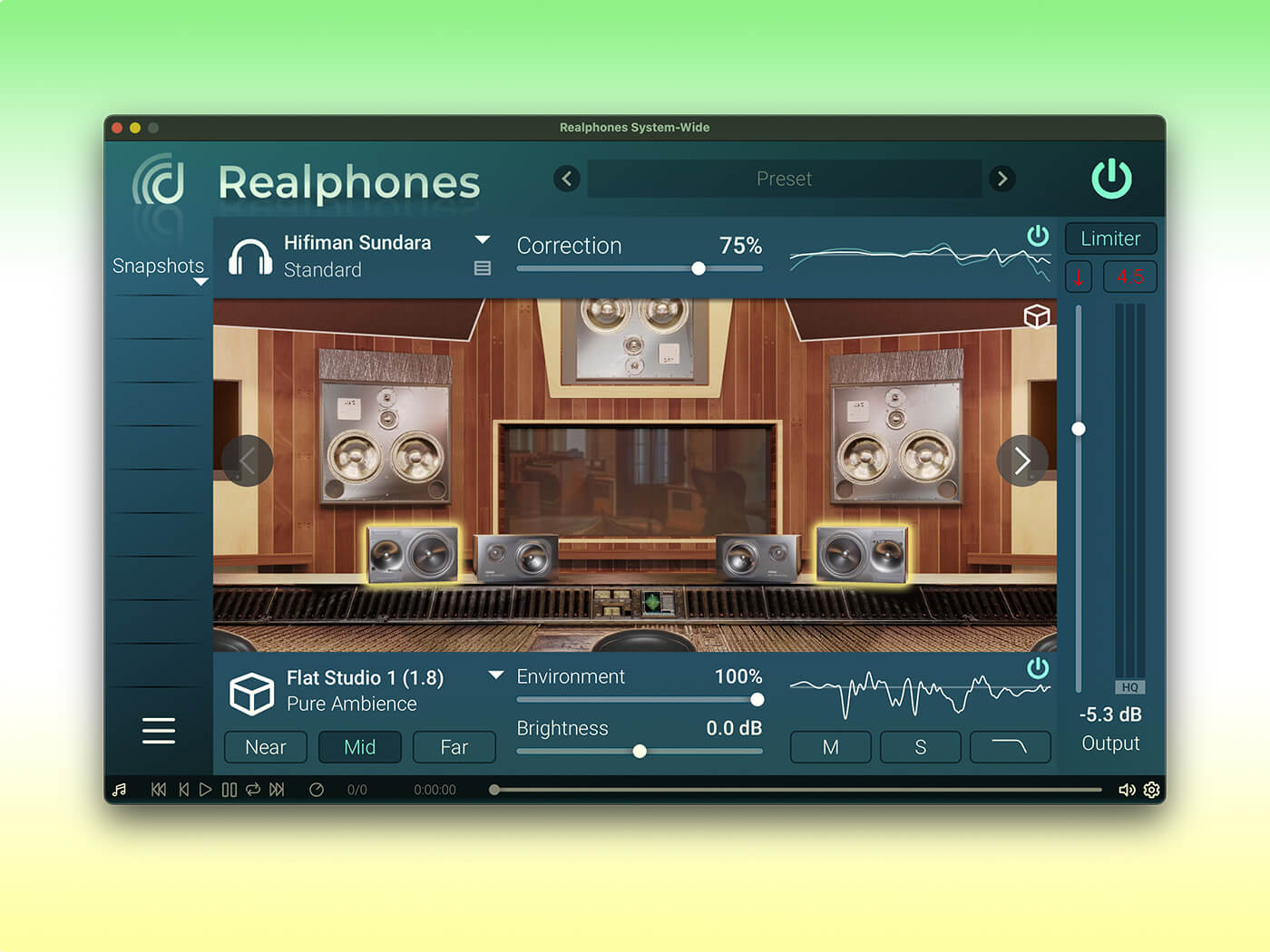
What does Realphones 2.0 do?
There are multiple parts to Realphones, starting with EQ correction to iron-out any nasty resonances and inadequacies in the headphones’ frequency response.
Having selected your particular headphone models in the user area of the dSONIQ site, the profile (an averaged EQ correction based on measurement of multiple sets of the same headphones) is loaded in. You can vary the percentage of correction — for example, for more subtle EQ that preserves some of the particular ‘mojo’ of the headphones — plus there’s an option to customise the correction with higher-priced tiers and even load in your own custom profile.
The second stage models crosstalk — an often-overlooked major difference between mixing on headphones and speakers. On headphones, sounds reach the listener instantaneously and you only hear hard-panned signals from a single ear cup/bud in each ear. With speakers, there’s always crosstalk; i.e, your right ear still hears some of the material playing in the left speaker and vice versa.
The third stage is modelling a range of speaker playback systems, ranging from domestic settings of Bluetooth speakers and in-car listening, through to large PA systems and more lugubrious recording studio listening experiences. There are options for near- mid- and far-field placement as well as speakers that have unusual or limited voicings, such as TVs and mobile phones.
The final ingredient is how the room reacts to the playback system — this has also been modelled by dSONIQ by gathering impulse responses at various distances. On a more shallow, referencing level, you can check how your mix might translate to high quality monitors in a well-behaved, acoustically-treated room that has a very tight reverb time. Dive deeper and the software allows you to simulate more extreme situations like nightclub systems with deep bass extension.
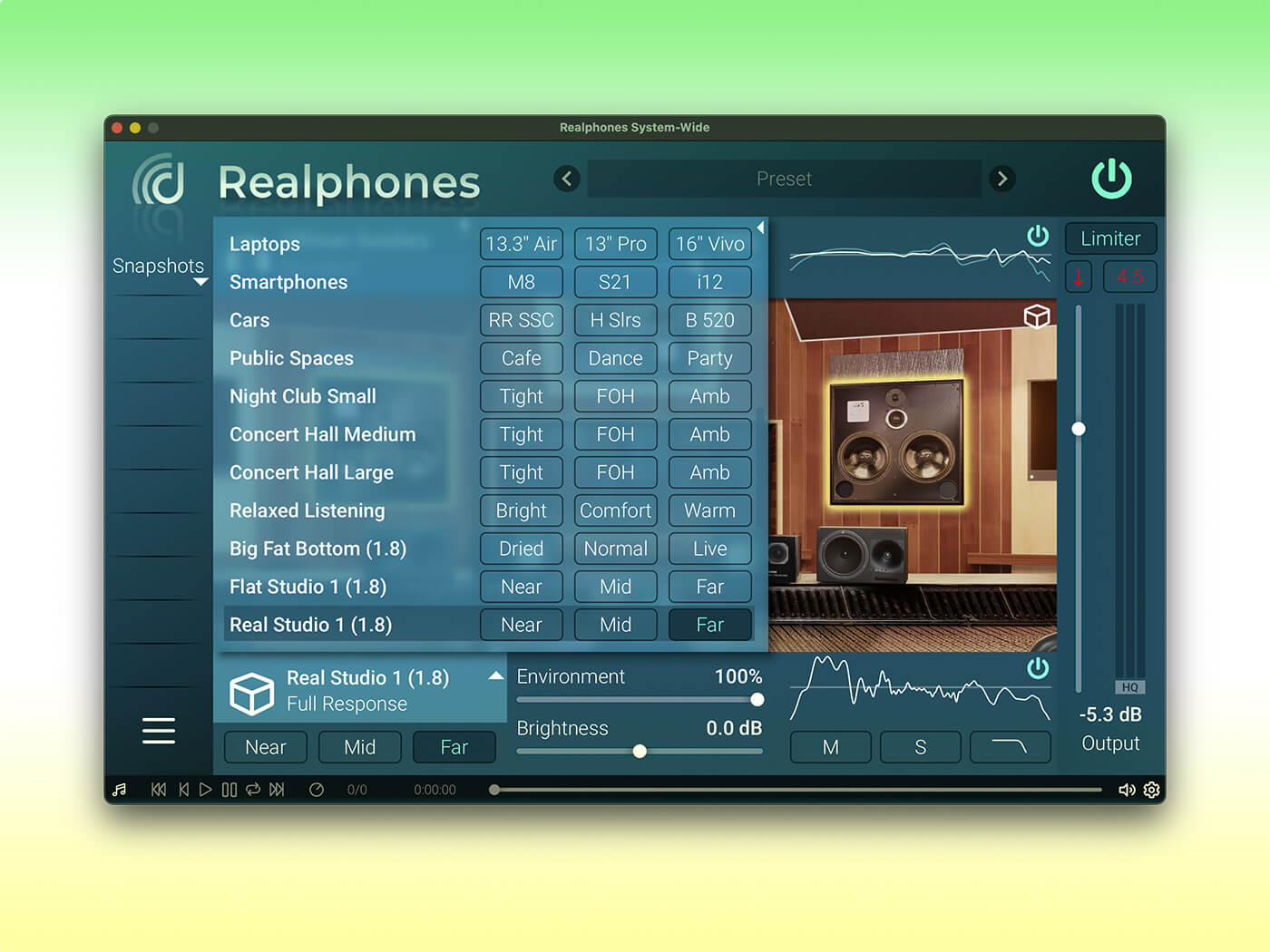
Can you really mix and master on headphones using Realphones 2.0?
As we’re already familiar with the software, we get going with our set of open-backed planar headphones in advanced mode, monitoring our finished mixes through different sets of speakers and rooms including expensive far-fields and near-fields in recording studios, some mid-heavy ‘grot boxes’, a car and then with a sub-bass boost to check low-end behaviour. All the simulations sound realistic, putting your ears around the monitors and into the particular space without any strange phasing or the lop-sided stereo fields sometimes experienced in other plugins that use impulse responses to simulate rooms. The live, PA settings are every bit as convincing as the studio and domestic spaces, so you can even explore how your song might come across at a gig.
MIDI control implementation is great, allowing us to toggle each main section on and off at the press of a button when the Realphones window is in background focus; especially useful as it makes most sense to have some stages always on (e.g. headphone correction) and introduce other parts (ambience) for final translation checks. We wish there was MIDI support for toggling through presets though, but this can be done with snapshots.
On a related note, saving user presets makes complete sense, but with the extra layer of nested snapshots (which also save all settings in the interface) followed by further sub-menus for speaker choice etc, it all becomes confusing in Advanced mode, even if you understand what all the controls do. Briefly we seek solace in Simple mode (implemented in the preceding version at userbase request) and it’s more of a breeze to use, with a grid of buttons to switch between different sets of speakers and rooms (it’s also quite difficult to find Simple mode as it’s accessed via a second settings menu obscured in the window).
But we very quickly learn to live with the quirks of the user interface as Realphones 2.0 proves its worth as an indispensable tool for mixing on headphones. We port the mix to our Genelec monitors for a translation check and everything sounds pretty much as expected, with no wrong moves in panning and effects depth choices and no surprises even in the bass end. Job well and truly done!
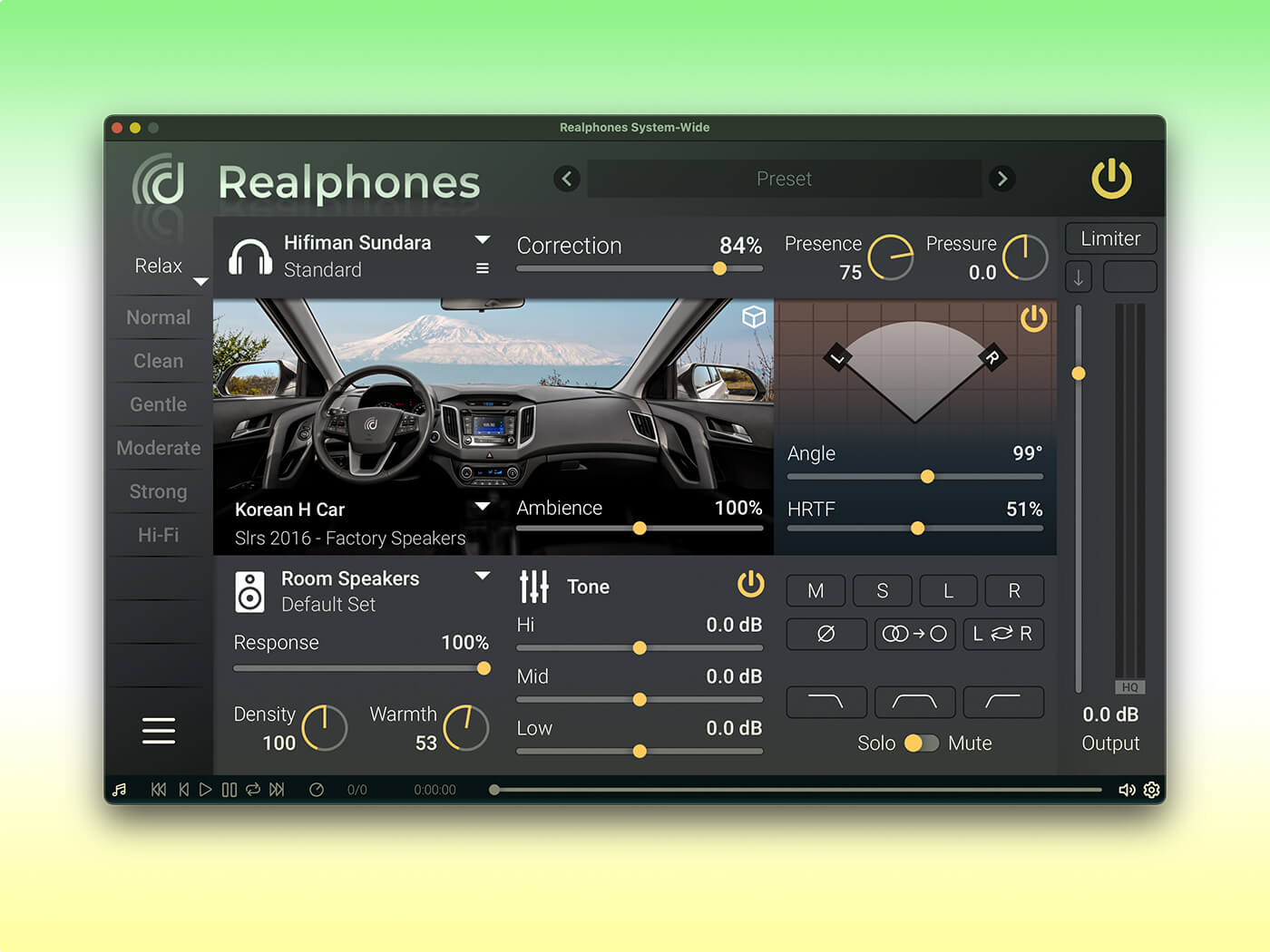
Should I buy dSONIQ Realphones 2.0?
Pre version 2.0, Realphones was already among the most comprehensive and convincing headphone mixing/monitoring suite, aside from the more expensive Slate VSX. But Slate uses its own standardised yet relatively basic set of headphones that you’re stuck with instead of being able to integrate your favourite cans, which are often selected using a mixture of personal and technical attributes such as comfort in long sessions and low levels of distortion.
Realphones 2.0 really builds upon its accolades. For those wanting to mix and master on headphones, it’s a one-stop, essential tool that’s well worth the price of admission despite the price increase and limited headphone profiles, with the Professional pack hitting the sweet spot for the vast majority of users.
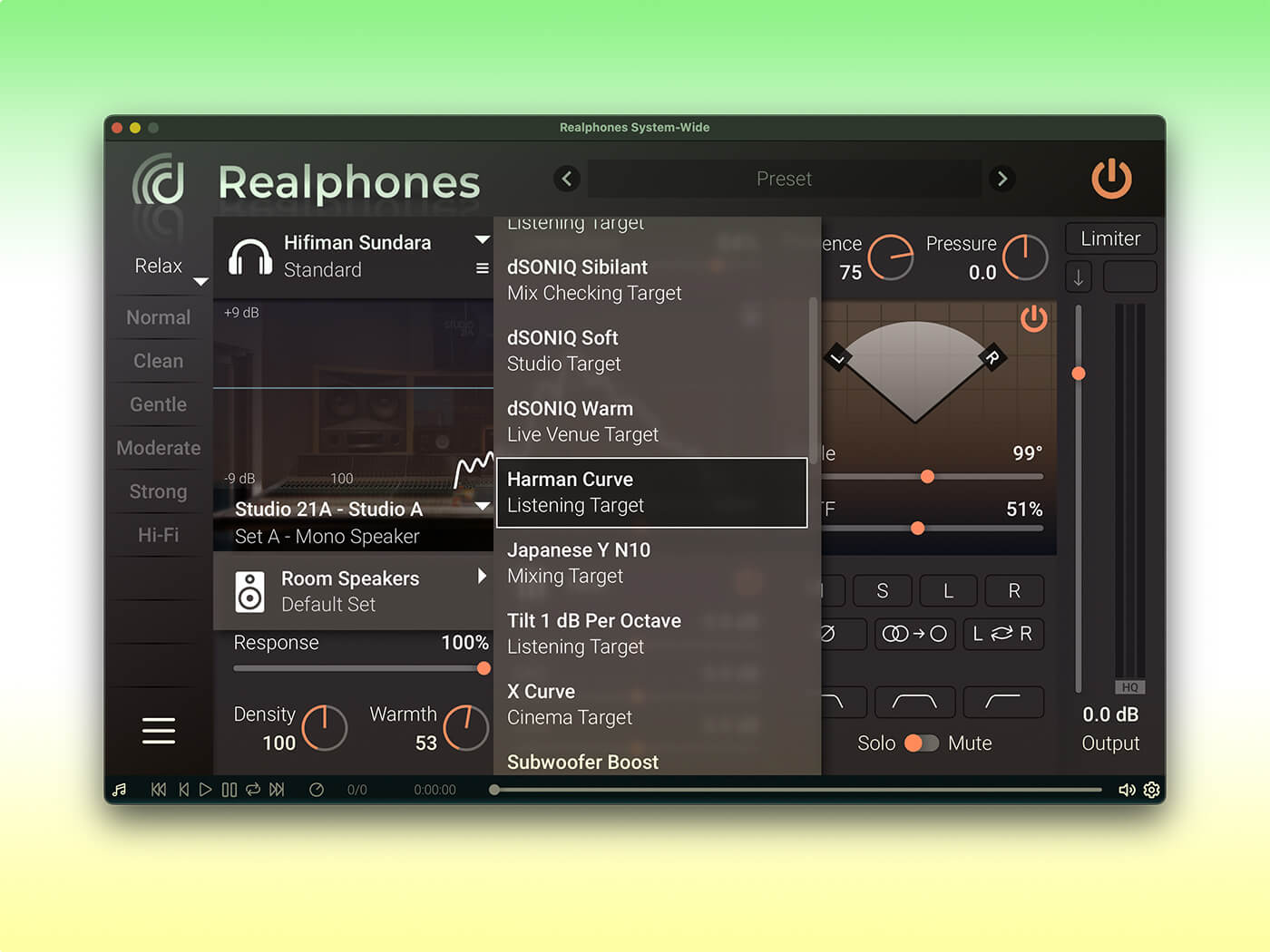
Key features
- Headphone mixing suite
- Plugin and system-wide operation (MacOS/Windows)
- Headphone EQ correction
- Crosstalk and HRTF modelling
- Up-to 45+ virtual playback systems including near-, mid- and far-field monitors, HiFi speakers, car systems and domestic/consumer systems
- Up-to 35 listening environments
- Additional subwoofer options
- Monitor control options (mid and side soloing, mono button etc)
- Integrated music player to load in reference tracks
- NEW studio and speaker emulations
- NEW sound engine updates
- NEW MIDI control
- NEW custom calibration profiles and correction profile tuning
- 41-day trial available